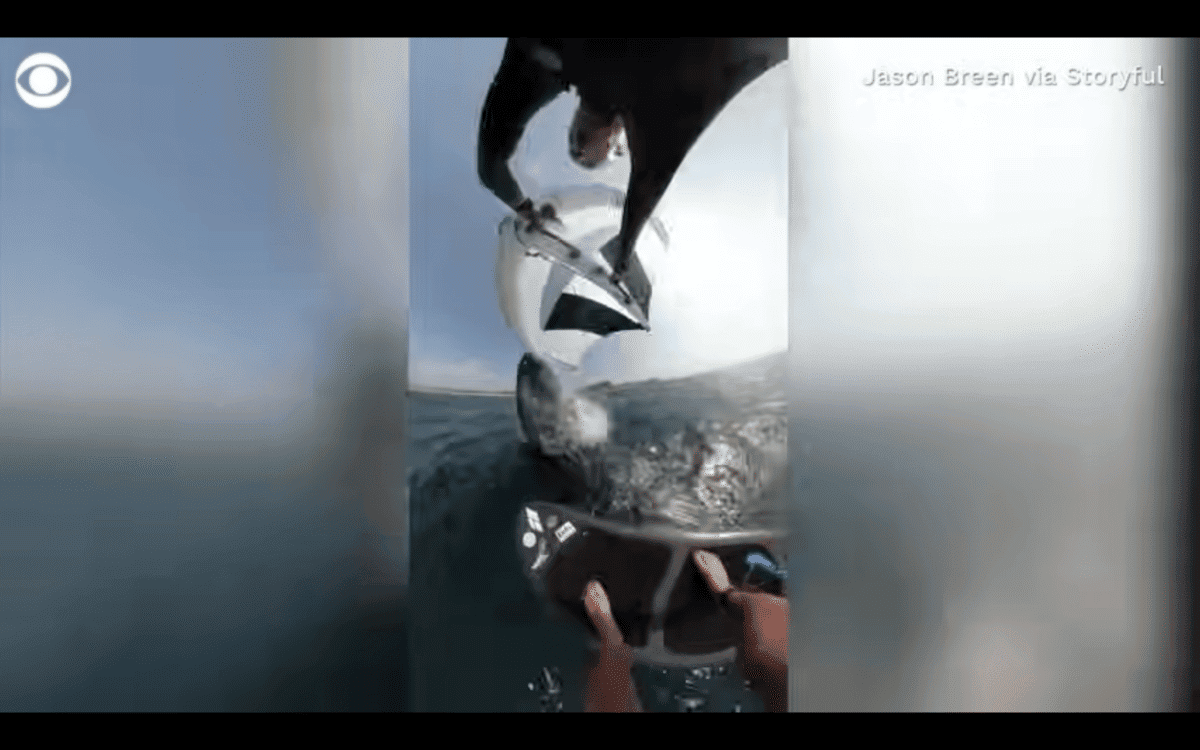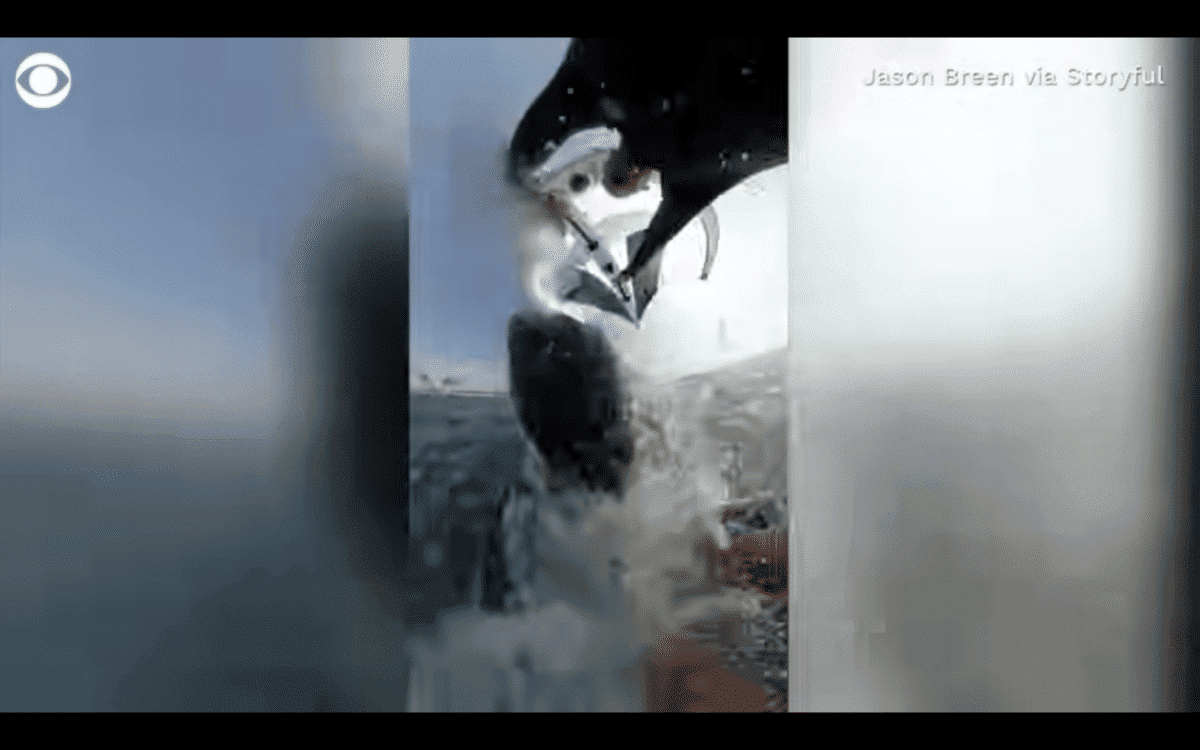Having a whale of time? It was during a wing-foiling session on Australia’s East coast, Sydney, when one of the most remarkable human-mammal interactions – which couldn’t be replicated if someone tried – occurred; and, thankfully, no one was hurt.

Whether you’re surfing, foiling, boogieboarding, or kayaking in New South Wales waters, which borders the country’s capital (Sydney), your biggest worries include sharks, including the formidable Great White.
However, rather than an apex predator, Jason Breen, who ironically goes by the name “Jaws”, was hit hard by an eager Humpback Whale. In fact, the timing was so spot on, it’s reminiscent of an Offensive Lineman in the NFL.

Humpback Whales Playful Nature
Humpback whales are celebrated for their playful nature, engaging in a variety of activities that showcase their joyful disposition. Breaching is a spectacular behavior, where they leap out of the water and crash down, believed to be a form of communication or exuberance. Tail slapping and flipper slapping are other playful actions, serving different purposes, including communication and play.
Spyhopping is another curiosity-driven behavior where humpbacks rise vertically to observe their surroundings. They also exhibit friendly interactions with other marine life, displaying cooperative and compassionate natures.
Humpback whales may playfully engage with boats and humans, creating memorable experiences. While their playfulness is captivating, it’s important to respect them as wild creatures and follow whale-watching guidelines for their safety and ours.
Watch Surfer Get Obliterated by Whale:
Where Do Humpback’s Roam?
Humpback whales are migratory creatures that are known to roam across various ocean regions. Their migration patterns are influenced by their need for feeding and breeding grounds. Here are the primary areas where humpback whales are known to roam:
- Feeding Grounds: During the summer months, humpback whales can often be found in high-latitude feeding areas. They travel to cold, nutrient-rich waters in regions like the North Atlantic, North Pacific, Antarctic, and other locations to feed on small fish, krill, and plankton. Some well-known feeding grounds include the Gulf of Maine, the Gulf of Alaska, and the Antarctic Peninsula.
- Breeding and Calving Grounds: Humpback whales migrate to warmer, low-latitude waters for breeding and calving during the winter months. The specific locations vary by population, but some common breeding grounds include the Hawaiian Islands, the Caribbean Sea, and the Baja California Peninsula in Mexico.
- Migration Routes: Humpback whales follow established migration routes between their feeding and breeding grounds. These routes can span thousands of miles and often take them from polar waters to tropical or subtropical regions and back. The timing and exact routes vary among different populations.
- Other Coastal Areas: Humpback whales may also be observed in coastal areas as they pass through on their migratory routes. These coastal areas can be excellent locations for whale watching.
It’s essential to note that there are different populations of humpback whales, and their specific migration patterns can vary. Each population has its own set of feeding and breeding grounds, which can be influenced by factors like food availability and ocean temperatures. Protecting these vital habitats and migration routes is crucial for the conservation of humpback whales.
Join our Forum for free today!

- Second American Killed by Elephant in Zambia This Year - July 22, 2024
- Elderly Man Kills Grizzly Bear in Montana - July 22, 2024
- Missing Cat Found Weeks Later, 40 Miles Away - July 21, 2024


